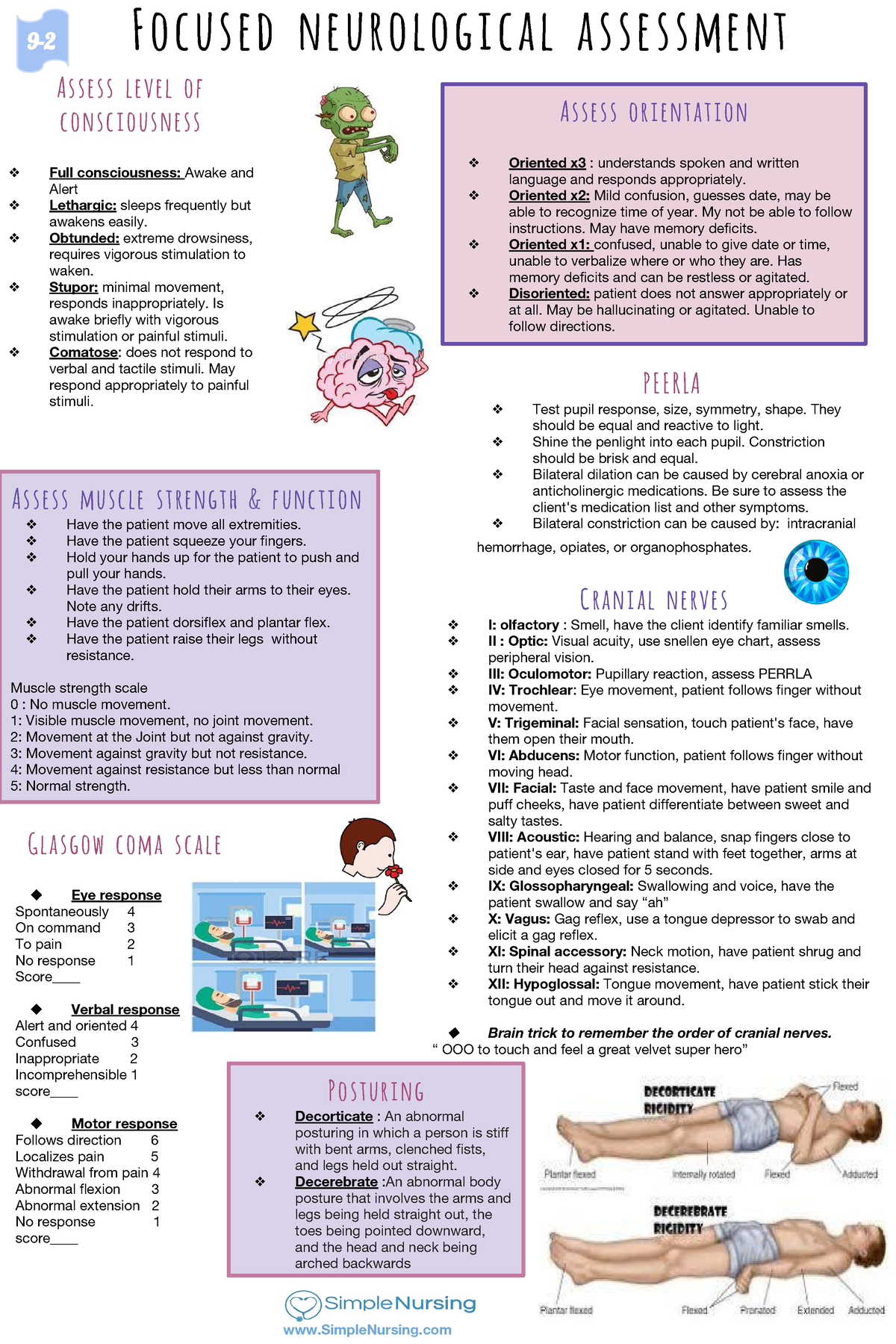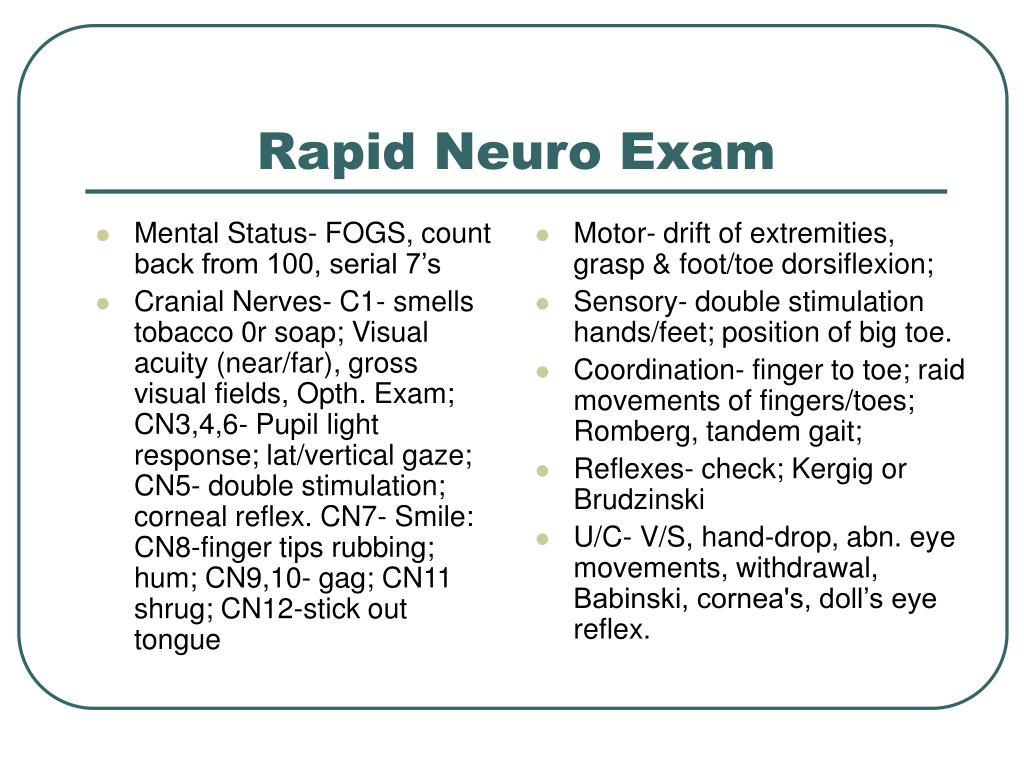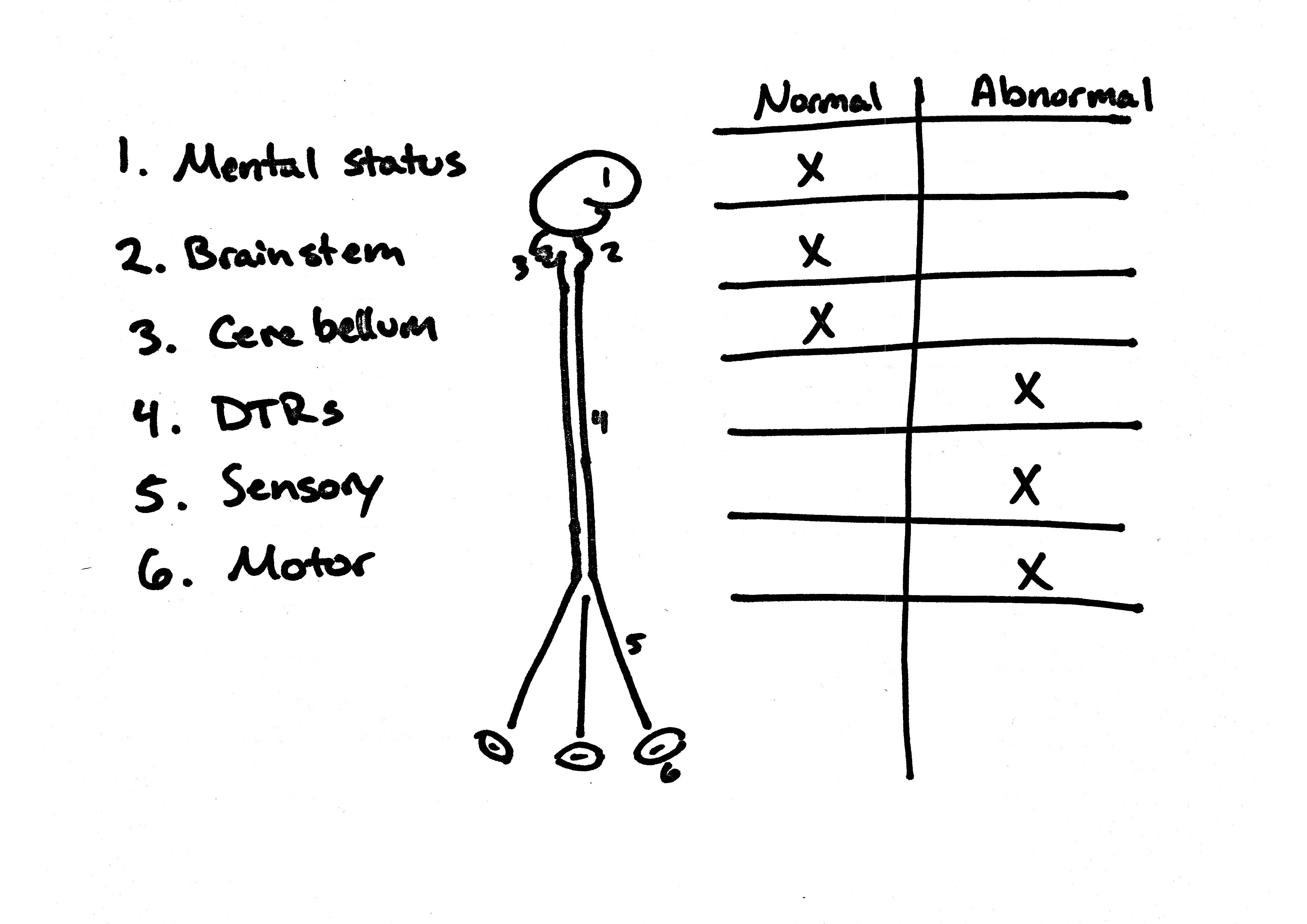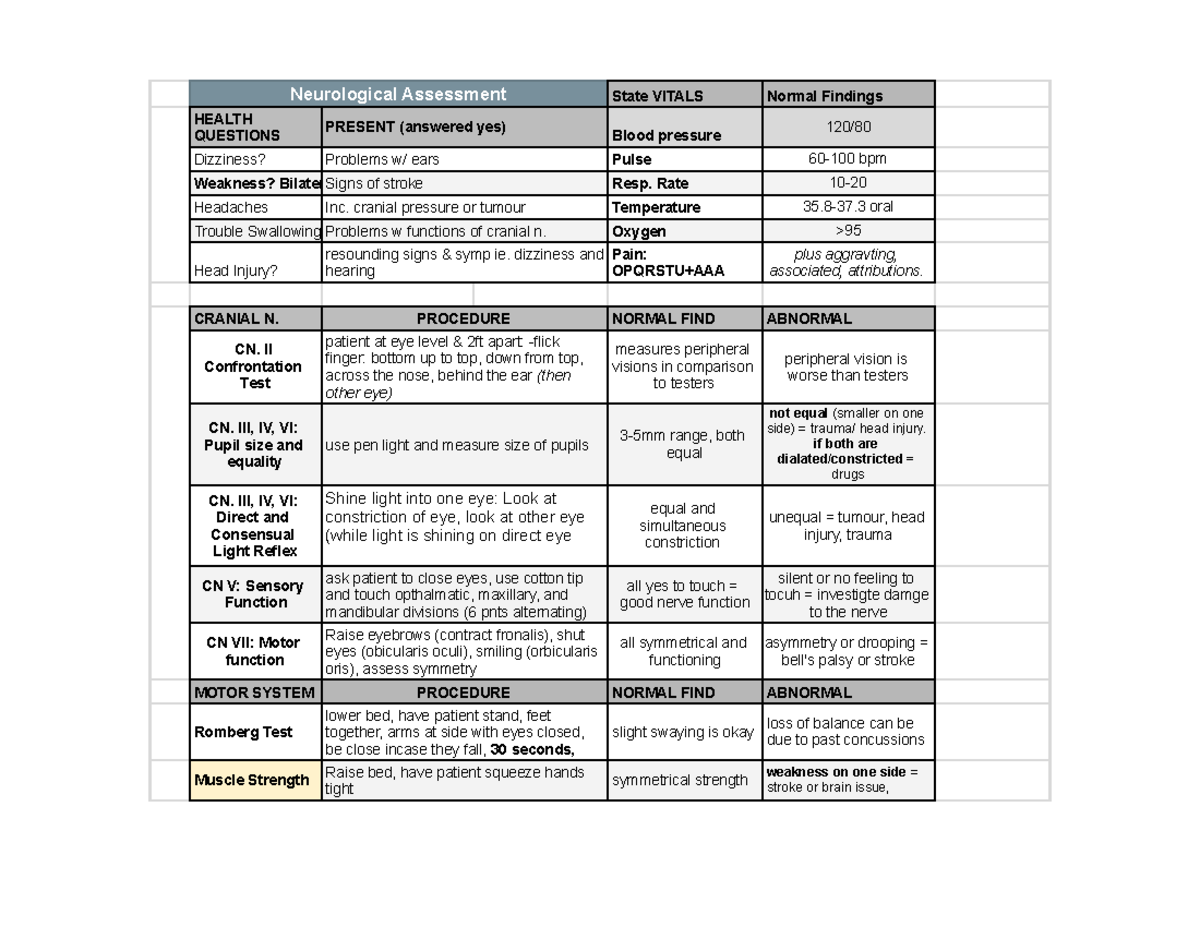Neuro Exam Cheat Sheet - We, neurologists, spend long time with patients so we use every opportunity. Comprehensive single system exam (neurological) with auscultation of either the carotid or the heart. The neurologic examination is typically divided into eight components: Examiner holds out his or her index fingers in the periphery of the patient’s vision, about 180o apart (e.g., above the patient’s right eye and below the patient’s left eye), and. This guide offers a comprehensive overview and a. Run heel down shinbone towards knee and. A thorough assessment of cranial nerves helps identify neurological deficits and aids in diagnosing neurological conditions. Closed, observing accuracy and tremor. Touch finger tip to nose with eyes open and:
Run heel down shinbone towards knee and. Touch finger tip to nose with eyes open and: This guide offers a comprehensive overview and a. Examiner holds out his or her index fingers in the periphery of the patient’s vision, about 180o apart (e.g., above the patient’s right eye and below the patient’s left eye), and. The neurologic examination is typically divided into eight components: Comprehensive single system exam (neurological) with auscultation of either the carotid or the heart. We, neurologists, spend long time with patients so we use every opportunity. Closed, observing accuracy and tremor. A thorough assessment of cranial nerves helps identify neurological deficits and aids in diagnosing neurological conditions.
The neurologic examination is typically divided into eight components: This guide offers a comprehensive overview and a. We, neurologists, spend long time with patients so we use every opportunity. Examiner holds out his or her index fingers in the periphery of the patient’s vision, about 180o apart (e.g., above the patient’s right eye and below the patient’s left eye), and. A thorough assessment of cranial nerves helps identify neurological deficits and aids in diagnosing neurological conditions. Run heel down shinbone towards knee and. Closed, observing accuracy and tremor. Touch finger tip to nose with eyes open and: Comprehensive single system exam (neurological) with auscultation of either the carotid or the heart.
Focused Neurological Assessment Focused neurological assessment
Examiner holds out his or her index fingers in the periphery of the patient’s vision, about 180o apart (e.g., above the patient’s right eye and below the patient’s left eye), and. Run heel down shinbone towards knee and. Closed, observing accuracy and tremor. We, neurologists, spend long time with patients so we use every opportunity. The neurologic examination is typically.
Cultural adaptation and reliability assessment of the Hammersmith
Touch finger tip to nose with eyes open and: We, neurologists, spend long time with patients so we use every opportunity. The neurologic examination is typically divided into eight components: Run heel down shinbone towards knee and. Examiner holds out his or her index fingers in the periphery of the patient’s vision, about 180o apart (e.g., above the patient’s right.
Neurological Assessment Practical Cheat Sheet NEUROLOGICAL ASSESSMENT
Run heel down shinbone towards knee and. Closed, observing accuracy and tremor. Examiner holds out his or her index fingers in the periphery of the patient’s vision, about 180o apart (e.g., above the patient’s right eye and below the patient’s left eye), and. A thorough assessment of cranial nerves helps identify neurological deficits and aids in diagnosing neurological conditions. This.
Neuro Exam Template
Closed, observing accuracy and tremor. The neurologic examination is typically divided into eight components: Run heel down shinbone towards knee and. This guide offers a comprehensive overview and a. Touch finger tip to nose with eyes open and:
Pin on Nursing School
A thorough assessment of cranial nerves helps identify neurological deficits and aids in diagnosing neurological conditions. Comprehensive single system exam (neurological) with auscultation of either the carotid or the heart. The neurologic examination is typically divided into eight components: Examiner holds out his or her index fingers in the periphery of the patient’s vision, about 180o apart (e.g., above the.
How to master the neuro exam Scope
Closed, observing accuracy and tremor. This guide offers a comprehensive overview and a. Run heel down shinbone towards knee and. Touch finger tip to nose with eyes open and: Examiner holds out his or her index fingers in the periphery of the patient’s vision, about 180o apart (e.g., above the patient’s right eye and below the patient’s left eye), and.
Mohawk College RPN Student Resource Cranial Nerve Neuro Assessment
A thorough assessment of cranial nerves helps identify neurological deficits and aids in diagnosing neurological conditions. Closed, observing accuracy and tremor. This guide offers a comprehensive overview and a. We, neurologists, spend long time with patients so we use every opportunity. Examiner holds out his or her index fingers in the periphery of the patient’s vision, about 180o apart (e.g.,.
Neurologic Examination Neurological assessment, Diagnostic imaging
Examiner holds out his or her index fingers in the periphery of the patient’s vision, about 180o apart (e.g., above the patient’s right eye and below the patient’s left eye), and. Comprehensive single system exam (neurological) with auscultation of either the carotid or the heart. A thorough assessment of cranial nerves helps identify neurological deficits and aids in diagnosing neurological.
OSCE Cheat Sheet Sheet 1 Neurological Assessment State VITALS
This guide offers a comprehensive overview and a. A thorough assessment of cranial nerves helps identify neurological deficits and aids in diagnosing neurological conditions. Run heel down shinbone towards knee and. The neurologic examination is typically divided into eight components: Comprehensive single system exam (neurological) with auscultation of either the carotid or the heart.
Normal Neuro Exam Template
Comprehensive single system exam (neurological) with auscultation of either the carotid or the heart. This guide offers a comprehensive overview and a. Run heel down shinbone towards knee and. Examiner holds out his or her index fingers in the periphery of the patient’s vision, about 180o apart (e.g., above the patient’s right eye and below the patient’s left eye), and..
Run Heel Down Shinbone Towards Knee And.
We, neurologists, spend long time with patients so we use every opportunity. This guide offers a comprehensive overview and a. Touch finger tip to nose with eyes open and: Closed, observing accuracy and tremor.
Comprehensive Single System Exam (Neurological) With Auscultation Of Either The Carotid Or The Heart.
Examiner holds out his or her index fingers in the periphery of the patient’s vision, about 180o apart (e.g., above the patient’s right eye and below the patient’s left eye), and. The neurologic examination is typically divided into eight components: A thorough assessment of cranial nerves helps identify neurological deficits and aids in diagnosing neurological conditions.









